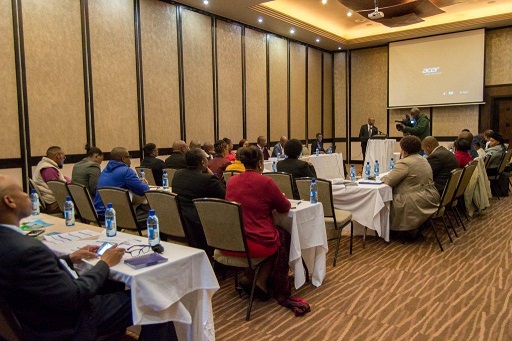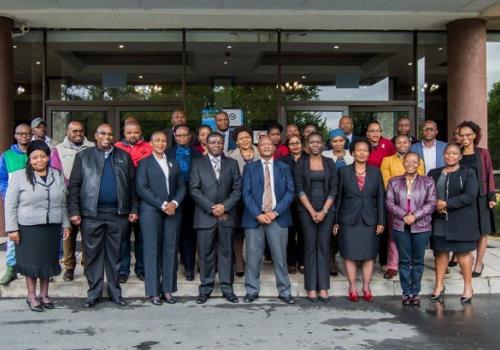Subsequent to the attainment of Full Operational Capability (FOC) status of the SADC Standby Force (SADC SF) in July 2016, the SADC Secretariat has been taking concerted efforts to ensure that all components namely the Military, Police and Civilian are ready for deployment. To ensure full operationalization of the Civilian Component, a series of awareness workshops have been conducted in SADC Member States. These workshops among other things, are organized by the SADC Secretariat/ SADC SF PLANELM to raise awareness among civilian experts in the SADC Region on the role of civilians in Peace Support Operations and also encourage experts to become members of the SADC SF Civilian Roster.
In the week beginning 2 October 2017, the Secretariat conducted awareness workshops in the Republic of South Africa and the Kingdom of Lesotho. The Workshops drew participants from different Government Ministries, Institutions and Non-State Actors.
More than fifty (50) civilian experts expressed interest and committed themselves to apply for the Roster membership. Additionally, the participants promised to support and assist the SADC SF in creating awareness of the Civilian Component to members of their respective organizations as well as their stakeholders and compatriots.
During the workshop, participants were apprised of the African Peace and security Architecture (APSA), the African Standby Force (ASF) and the SADC standby Force (SSF) with special emphasis on the Civilian Component. The APSA is a structural framework which was established by the African Union in 2003 in order to harmonize the continental response to African peace and security challenges. The ASF was established in order to enable the Peace and Security Council of the African Union perform its responsibilities with respect to the deployment of peace support missions and intervention pursuant to Article 4 (h) and (j) of the AU Constitutive Act. The Force is composed of standby multidisciplinary contingents, with military, police and civilian components in their countries of origin and ready for rapid deployment at appropriate notice” (PSC Protocol Art 13.1).
Regional Economic Communities (RECs) / Regional Mechanisms (RMs), of which the SADC SF is one of them, are the building blocks of the APSA and the regional Standby Forces together form the ASF. The SADC SF was established by the SADC Summit through a Memorandum of Understanding (MoU) that was signed on 17 August 2007 in Lusaka, Zambia. Article 3 of the MoU provides for a standby force that consists of military, police and civilian components. The Force’s main function is to participate in Peace Support missions as envisaged in Article 13 of the Protocol Establishing the PSC of the AU.
The SADC SF Civilian Roster is being populated with civilian experts from different professions which are most relevant to a multi dimensional PSO, such as Civil Affairs, Political Affairs, Legal Affairs, Public Information, Human Rights, Gender, and Humanitarian relief liaison to name a few. A comprehensive list of the fields of expertise and the roster membership application forms can be accessed and completed through the African Standby Capacity (ASC) website on https://database.africanstandbycapacity.org.
Similar workshops have also been conducted in the Republic of Botswana, Republic of Malawi and the United Republic of Tanzania.


